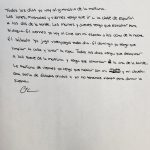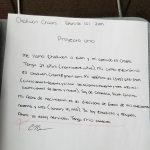Exploring Culture
Throughout the semester two areas of information stood out to me in regards to social and professional practices. In class we covered the use of social media in Spanish-speaking countries, as well as, the understanding of siestas in those countries. While in America, many of the preferred social media outlets are used more to disconnect from the world (tiktok and instagram), the preferred social medias in Spanish-speaking countries are used to better connect with friends and family (facebook and whatsapp). When learning of “siestas”, a period of rest during work, I came to understand that it isn’t as widely practiced or accepted in every Spanish-speaking country, although it is still very recognized in many. Some of the information I’ve come to learn throughout the semester shows that there as many similarities as there are differences among each Spanish-speaking country that also translate into differences and similarities in American culture.
Engaging in Communities
Engaging in your immediate and global community is important when it comes to getting to know the individuals around you. It gives an opportunity to make new friends, connections, and assist the people that need it. Sometimes all that’s needed is a friendly face and a warm embrace.
Interpersonal Communication
In Spanish101 this semester, we engaged in many assignments that tested our communication abilities. Many of the assignments were team/group based where we discuss our interests and daily life among our peers in class. These assignments were able to assist each student with gaining comfortability with speaking Spanish. Working in groups with our peers also gave opportunities to correct each other whenever a mistake was made. Many of the mistakes were small, but could make a big difference in context, whether it be incorrect conjugations or emphasis on the wrong letter for each word. Overall, these group assignments helping to further our understanding of the language and efficiency when speaking.
Presentational Speaking
In each unit of our lingrohub app we had assignments called “proyectos”. These proyectos ranged from written assignments to video conversations. One assignment was a conversation with a peer from class. We were to greet each other and ask about each other’s personalities, age, and give a brief description of our classes and major. The challenge with the assignment came with learning and maintaining the vocabulary required to understand each question and give the appropriate responses without reading notes. I excelled with pronouncing the vocabulary words and assisting my partners with their sentence structure, but I would like to have been able to have more knowledge vocabulary at the time to give more descriptive answers and engage in a deeper conversation.
Presentational Writing
In Spanish101 this semester, most of our assignments and activities were written responses. We worked on group assignments, created a descriptive schedule, and wrote an introduction about ourselves. Each assignment we were able to stack what we’ve learned to create more meaningful and descriptive writing. Our spelling of each word became more proficient, as well as, the structure of our sentences and building better narratives for each assignment. Being able to write and say what I enjoy doing and my daily routine is a great building block to learning how to incorporate Spanish into my daily life.

Interpretive Listening
In class this semester we’ve had lessons and assignments where listening played a major role. Some of the assignments included spelling challenges, pronunciations, and listening for specific information. The pronunciations were challenging, but not as much as the spelling. There are many words that, for a native English speaker, are difficult to sound and spell out. The most challenging listening assignment was for us to listen to a recording and answer questions based on what we heard. Although difficult, it proved itself useful, letting each student engage and learn how our known vocabulary is used, also letting us become accustomed to hearing Spanish in and out of class on a more regular basis. During my free time I would also watch television shows that were based in Spanish-speaking countries to further acquaint myself with the language and culture.
Interpretive Reading
There were many opportunities to read text in Spanish during the semester, whether assignments or just finding something on our own. Most assignments were made for the class to read amongst ourselves and in groups in order to complete the tasks asked of us. The biggest challenge presented in each reading was the lack of vocabulary we have as entry level Spanish students. This challenge made it difficult to perform each task as we lacked full context of each reading. Overcoming this came with further knowledge of the language gained from studying and having more efficiency with each unit we covered this semester.
